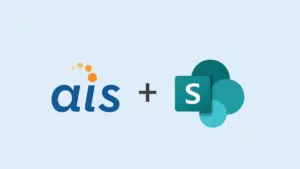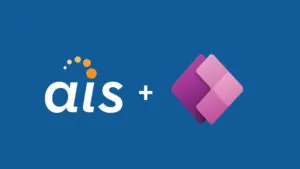 SharePoint adoption is widespread in most organizations today, and a very common use case for SharePoint is as the core technology for an intranet. There are many features of SharePoint 2010 that make it an excellent choice for an intranet, including web content management, workflow, publishing and search. SharePoint offers a secure, scalable technology that empowers content owners to create, approve and publish pages in an easy-to-use, Microsoft Office-like user interface. With SharePoint, you get a great looking, high-functioning intranet that’s secure and easy to use. (In Jakob Nielsen’s “10 Best Intranets of 2013”, he notes 70% of the awardees are using SharePoint.)
SharePoint adoption is widespread in most organizations today, and a very common use case for SharePoint is as the core technology for an intranet. There are many features of SharePoint 2010 that make it an excellent choice for an intranet, including web content management, workflow, publishing and search. SharePoint offers a secure, scalable technology that empowers content owners to create, approve and publish pages in an easy-to-use, Microsoft Office-like user interface. With SharePoint, you get a great looking, high-functioning intranet that’s secure and easy to use. (In Jakob Nielsen’s “10 Best Intranets of 2013”, he notes 70% of the awardees are using SharePoint.)
With the release of SharePoint 2013, however, there are several new features that are worth noting if you’re thinking of upgrading your intranet from a previous version of SharePoint, or migrating from another product. If your organization is considering a redesign or a technology update of their intranet, SharePoint’s newest release is more compelling than ever as the platform of choice.
There are many ways to group the new features of SharePoint, but for this post, we’ll concentrate on the use of SharePoint for an intranet. This post also focuses only on what’s new in the 2013 release and how these new features can enhance a SharePoint 2013-driven intranet. There are several changes to SharePoint 2013 that are so fundamental, they cross nearly every use case, including this one. Most of them that we’ll mention here are captured in our guide The Top Reasons Why Your Business Will Love the New SharePoint, so please check that out if you’d like to learn more about anything I mention.
The new top-level features of 2013 that will directly impact your intranet include:
- Smarter Search: FAST for SharePoint 2010 was an add-on product with additional capabilities that required a separate license and configuration. In SharePoint 2013, FAST is now completely integrated into SharePoint Search at no additional cost. Search continues to be an expanding capability in SharePoint and is especially important for intranet use. Not only is user query driven search better in 2013, but new web parts offer search driven navigation out of the box.
- Modernized User Interface: SharePoint 2013’s user interface has been modernized, providing both a cleaner design and using more efficient standards driven technology like HTML5. The new SharePoint 2013 implementation makes supporting tablet and smartphone users easier than ever. The new “Contemporary View” and “Device Channels” are features you’ll definitely want to explore if your intranet is viewed on different device types.
- Performance and Stability: The last general feature we’ll mention is the numerous investments Microsoft has made in making SharePoint 2013 more stable and scalable than ever. Many organizations using SharePoint on premises or in the cloud leverage the same farm for many use cases. Greater stability comes in many forms, most notably in the new App Model, which provides isolation without crippling functionality (Sandbox Solutions that you will actually use). Microsoft has released impressive statistics on the performance gains they’ve realized on their SharePoint 2013 deployments, along with increasing most major scalability limits. (For more details, see The Top Reasons Why Your Business Will Love the New SharePoint.)
Once you dive deeper into what’s new in 2013 for your intranet, you’ll find that the most exciting features include search-driven navigation, enhanced publishing, improved design tool support, and features to help you store content once while surfacing it in many locations.
After reviewing all the new features of SharePoint 2013, the major stand-out for intranet usage is search-driven navigation, out of the box. Content creators can continue using publishing capabilities they’ve grown accustomed to in previous versions (with clean copy and paste, a time-saving feature long overdue) but can now use search like never before to drive content discovery.
We already mentioned the improved search capabilities that everyone gets as part of their SharePoint 2013 license, but what’s even more exciting for intranet use are the out-of-the-box search-driven navigation capabilities. The new Content Search web part makes use of Display Templates, Query Builder and Query Rules. This all makes adding (or starting with) search-driven content simple.
As in previous versions of SharePoint, content creators can create new pages in SharePoint 2013 and post material. By adding the new Content Search web part to the page, SharePoint Search will deliver content related to the text on the page and allow the user to discover more material that is likely of interest. The Content Search web part simply uses the text already on the page to query the search index for additional information and displays the results using the built-in Display Templates.
Every part of this process is extensible by the content creator without code. The query can be modified using Query Builder, results can be refined using Query Rules, and your organization can create customized Display Templates to modify how the results appear. Using two Content Search web parts on a single page with no text creates a completely search-driven page without writing any code.
In addition to search-driven content, there are a more new features that will greatly impact intranet teams. SharePoint 2013 makes great strides in allowing non-SharePoint designers to be more productive by supporting industry leading design tools. If your design team is shared across different platforms and work on many projects, this will likely have positive effect on their productivity and results. Rather than compromising by using your developers to brand your intranet, or constraining your designers to tools they are not accustomed to, the design team can now rely on their tools of choice and join the team as first-class citizens.
The last two features you will want to look at closely are Catalogs and Digital Asset Libraries. Both of these features add capabilities to SharePoint that make it easier than ever for your organization to store content once and use it in many places.
[pullquote]Catalogs and Digital Asset Libraries add capabilities to SharePoint that make it easier than ever for your organization to store content once and use it in many places.[/pullquote]With Catalogs, nearly any list in SharePoint becomes usable on a publishing page without a need to be in the same site collection or even the same farm. Once a SharePoint list is marked as a Catalog, it can be added to another site by simply adding site content, as it will now appear in the site contents page. Digital Asset Libraries are a list type that contain specific new features to facilitate the “store once use many” approach to images, audio and video files. Column types that are designed specifically for rich content are provided out of the box, along with a helpful preview mode.
Hopefully this post provides you some ideas of where to start looking for information regarding the new features in SharePoint 2013 and how they may impact your intranet projects. By thinking through some of these features before planning a new intranet, a migration from another product, or a 2013 upgrade, you may end up writing less code, simplifying solutions, and including features and people that may have felt out of reach in previous versions.






